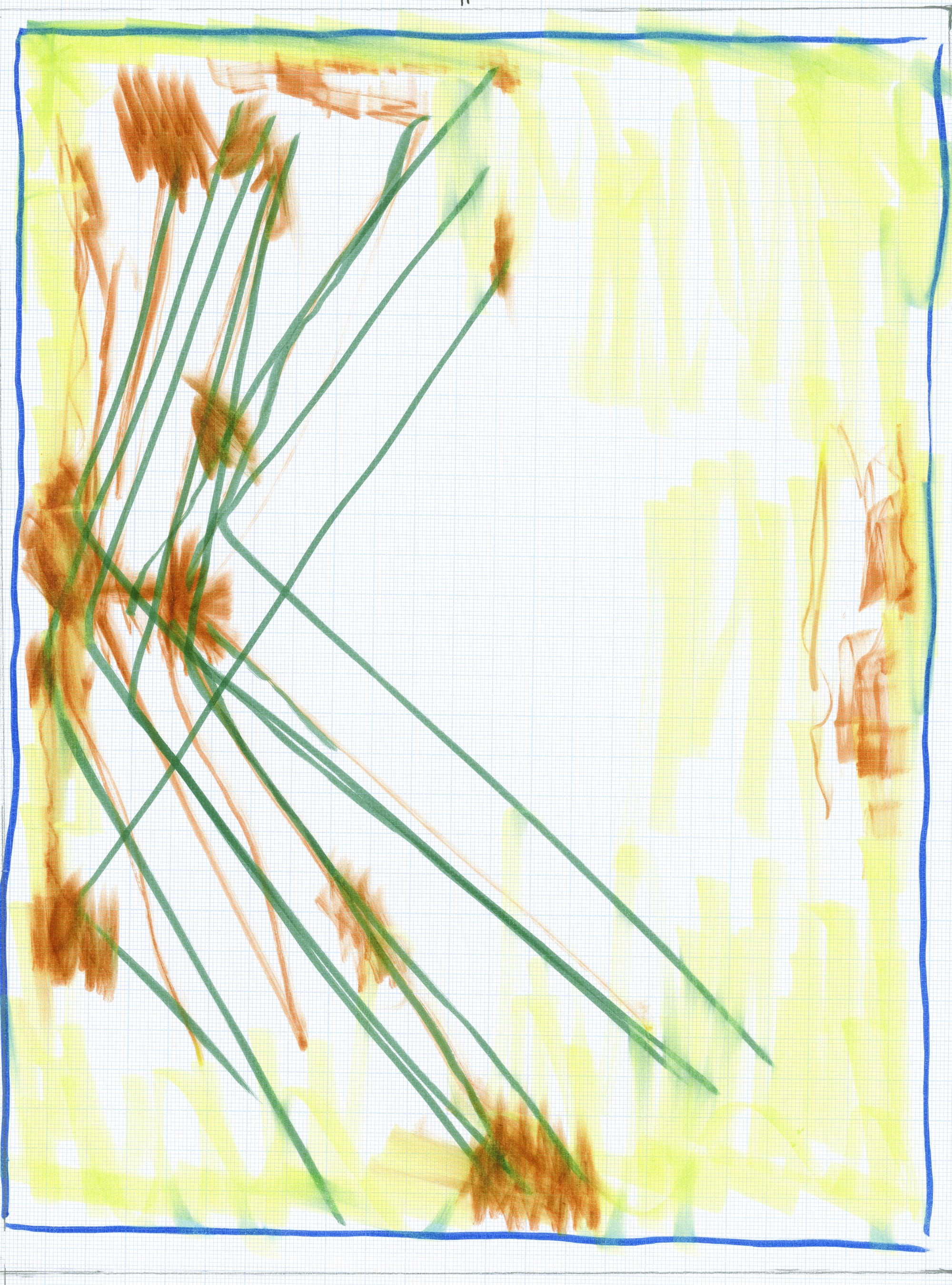
Jean-Marc Bustamante

Having begun his artistic career well over three decades ago as a photographer, Jean-Marc Bustamante has since worked across diverse media to produce sculptures, prints, paintings, and installations. His tellingly titled series “Aperture,” 2015–, is the latest reminder that no matter what materials, tools, or processes Bustamante employs, his work remains conceptually rooted in photography.
The nine large-format ink-jet prints on silver photographic paper that were featured in Bustamente’s recent show are based on scans of his colored-felt-tip-marker drawings. Installed in numerical order across four walls of the gallery, Aperture I–IX, 2015, from the series “Aperture,” 2015, feature simple doodle-like designs in a consistent palette of brown, yellow, orange, blue, green, and purple. While some, like Aperture V and Aperture III, hint at landscape (a field of flowers and sunlight reflected on water, respectively), the bulk of the series is categorically abstract. Though he’s replaced the camera with a scanner, Bustamante holds on to certain framing and focusing techniques that make these works convincingly photographic. Hand-drawn blue rectangles around the contents of each drawing have a double resonance, evoking an in-camera viewfinder as well as grease pencil marks on a contact sheet indicating which frames to print. The graph paper support, meanwhile, recalls the gridded focusing screen inside large-format cameras, like the one Bustamante used for his “Tableaux photographiques” series, 1978–82.
No stranger to blending media to create hard-to-(neatly)-define hybrid works, Bustamante previously transformed drawings into large-scale prints in his “Panoramas,” 1996–2013. For this series, his drawings were scanned, enlarged, and silk-screened onto large Plexiglas sheets. Unlike the “Panoramas,” whose analog print process required that the original drawings be digitally simplified into bold lines and hard-edged areas of color, the laser-printed “Aperture” works magnify the original drawings’ nuances. Blown up to over eight feet in height, compositions of squiggles, dots, lines, and areas of shading are elevated to a painterly stature, but dubiously so. Ostensibly trivial marks appear unconvincingly monumental. Similar to the nondescript landscapes—dirt roads, construction sites, empty swimming pools—of the large-scale “Tableaux” photographs that launched Bustamante’s career in the early 1980s, his recent photographic subjects are at odds with their grandiose treatment.
If nothing else, the banal subject matter of the “Aperture” series makes it easier to focus on the artworks’ curious dual status: photographic reproductions that are also objects in their own right. Blown up to such an extreme degree, even Bustamante’s most confident marker strokes appear to break down, feathering at the edges and suffering slight pixelation. Upon closer inspection, even the underlying grid (the backbone of modernist painting as well as a photographic tool) begins to dissolve. This impression of dematerialization, which is not inherent to the original drawings, but rather the result of their digitally mediated representation, articulates the distance and distinction between subject and photograph. Never one to shy away from paradox, Bustamante insists on the materiality of the photographs themselves by mounting the prints on aluminum sheets and floating these inside the frame. Diminishing the substance of his drawings, the artist imbues his photographs with depth, weight, and objecthood.